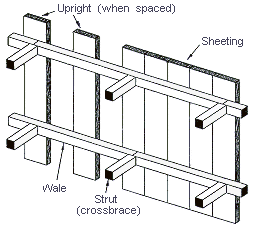(Please correct me if any of my terminology is inaccurate!)
I have a "den" which is a finished walk-up basement (half-above ground, half below ground). The den floor has vents, and when I look under the vent covers I can see about a six-inch gap between the bottom of the floor and the "ground" below the den. (These vents are apparently heating vents: Lukewarm air comes out of them when the furnace kicks in, but I see no metal ductwork under there.)
Very often, even after moderate rain, I can see standing water on the "ground" below the vents. After very heavy rain, the water level can get alarmingly high, although the water hasn't gone above the floor yet.
The den does have a sump pump. The sump pit is fed by a clay pipe which is about 5 feet underground. I called a plumber who fed a video camera into the sump pit to see if there was a blockage in the clay pipe. He immediately ran into a problem:

Basically, the clay pipe that is outside and the clay pipe that leads to the sump pit form a "T," and the outside pipe has a tiny hole that the plumber claims is inadequate to drain the outside water. Additionally, this narrow hole prevented us from using the camera to see if the clay pipes extended all the way around the den.
The plumber says that this could be causing the standing water that I see under the vents, and that the solution would be to dig outside down to the exterior pipe to widen that narrow hole. This solution doesn't sound so bad.
On the other hand, a waterproofing company I called says that I need to install an interior drain tile system to fix the problem. This sounds like a very costly and disruptive undertaking since the den is finished and we would have to rip out carpeting and vinyl tiles.
On the third hand, a stormwater engineer from the city said that a little bit of standing water is to be expected in an older setup like this, and suggested that maybe I should just take a "wait and see" approach, or maybe I need to call the health department to see if I should be worried about mold. He also thought that the standing water could possibly be taken care of by digging pits under the floor and filling these pits with gravel.
So I have three differing expert opinions and I'm totally confused:
- How worried should I be about health implications of standing water?
- How can these vents possibly be effective heating vents? Has the metal rusted away? Should I do something about them?
- Is the standing water really something that is fairly normal and that I shouldn't be too worried about?
- If not normal, what is the ideal fix?
- Should I explore less costly / less ideal solutions first?

